If you have $1,000, it's pretty easy to build a good PC whether you're using AMD's Ryzen and Radeon chips, Intel's Core and Arc processors, or other hardware. But what if you have closer to $700? Although it's much more challenging to build a PC without major compromises for $700, it's not impossible, and we've done it using all AMD hardware. If you follow our guide to the letter, you'll have a gaming PC that can easily run games at 1080p and 1440p with a framerate of 60 FPS or more.
Additionally, we're assuming you're buying your PC parts brand-new, but you don't have to. On such a small budget, it wouldn't be a bad idea buying many components used, particularly the CPU and GPU. You can use those savings from buying used hardware to either lower the overall cost of your PC or to get better hardware for the same price. For this guide, we're ignoring used hardware and are just considering what you can buy new.
These are the best parts for a budget AMD PC build in 2023
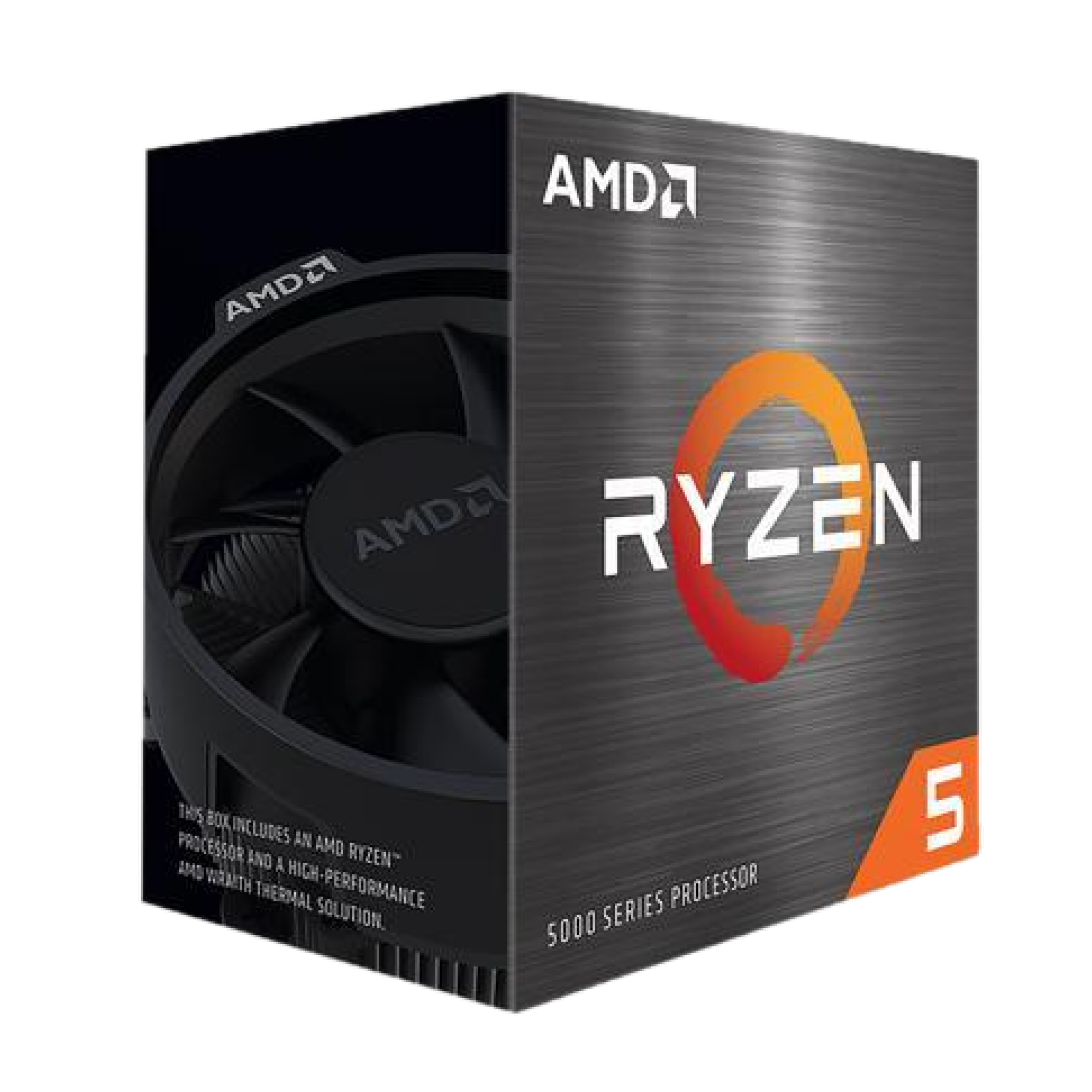
Ryzen 5 5600
The best value possible on the AM4 platform
The Ryzen 5 5600 is a great 6-core, 12-thread CPU. It might be a previous-generation product, but it now presents a great value considering its performance.
- Pretty cheap
- Good for gaming at 60 FPS or a little more
- Decent productivity performance
- Getting old
- AM4 platform is also old and ends at Ryzen 5000
On a budget of $700, we have to rule out Ryzen 7000 and the AM5 platform as a whole since it's just too expensive, which leaves only the Ryzen 5000 series and 500 series motherboards as options. In the current market, there are two budget Ryzen 5000 CPUs worth considering: the Ryzen 5 5500 and the Ryzen 5 5600. They're both six-core CPUs using the Zen 3 architecture, but the 5500 is actually an AMD APU with disabled graphics, while the 5600 is a true desktop chip. The 5600 is around $30 more expensive, but it's worth it for this build and should fit in the budget.
The 5600 is essentially a 5600X with slightly lower clock speeds. It has the same 32MB of L3 cache, the same support for PCIe 4.0 devices (something the 5500 lacks), and the same number of cores and threads. The end result is that the 5600 performs basically the same as the 5600X in just about every task.
While the 5600 is still a decent CPU nowadays, it's a fair bit behind the Ryzen 5 7600 in basically everything, including games. If you're okay with 60-120 FPS, you won't mind the 5600, but if you're trying to hit some really high framerates in games like Counter-Strike 2 where that sort of thing matters, you might find yourself CPU bottlenecked.
Normally, I would go with the 5500 instead of the 5600, but because other components in this build have gotten cheaper recently, getting the 5600 is worth it. It's a fair bit faster than the 5500, especially in games, and also allows you to get the full performance out of PCIe 4.0 SSDs, which are very affordable today. However, the 5500 is a good alternative if you want to lower the budget even more.
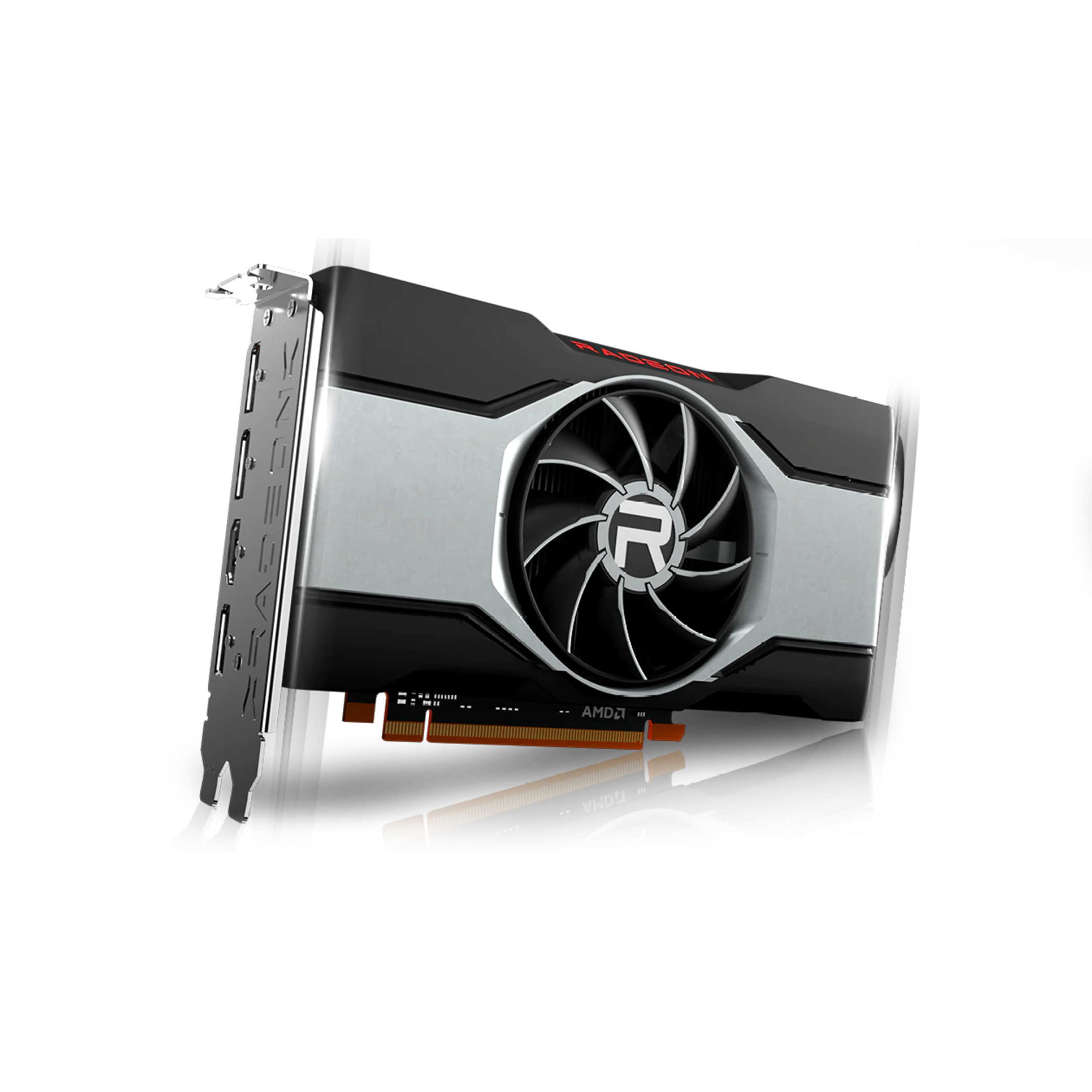
AMD Radeon RX 6600
Great for 1080p and 1440p gaming
The AMD Radeon RX 6600 is a budget graphics card geared towards 1080p gamers. It's a solid option to consider for those who're looking to enjoy 1080p gaming without spending too much money on high-end cards.
- Costs just over $200
- Capable of 60 FPS and higher at 1080p and 1440p
- Doesn't consume too much power
- Iffy supply situation
- Takes up a big chunk of the budget
- Getting old
One of the reasons why we chose the Ryzen 5500 over the 5600 in the CPU section is because it makes the Radeon RX 6600 much more feasible to buy. You can find it for around $230, give or take $10 or $20, so it's not cheap on a budget of $700. However, it's way, way faster than the RX 6500 XT, the GPU directly below the 6600 in price and performance. The 6600 enables great framerates at 1080p and 1440p, from 60 to even 140FPS, without major problems.
The 6600 is the lowest-end version of AMD's midrange GPUs, and it's basically 70% of an RX 6700 XT. It has 28 Compute Units (or CUs) and 8GB of GDDR6 memory, compared to 40 CUs and 12GB on the 6700 XT. It's on par with the RTX 3060 and Arc 750 in most titles without considering ray tracing, which is significantly slower on the 6600.
The only obvious alternative to the RX 6600 is the RX 6500 XT, which is about $50 cheaper but is only about half as fast. For a gaming PC, it makes literally no sense to cut your graphics performance in half just to save $50, and if you're going with the 5500 instead of the 5600 the performance will be even worse; the 6500 XT requires PCIe 4.0 for max performance, but the 5500 only has PCIe 3.0.
The Radeon RX 6600 takes up a third of the budget, and this is where you might want to go with a used GPU. The RX 5700 and 5700 XT go for less than $200 on eBay at the time of writing and have similar performance, though you will have to accept worse power efficiency and potentially worse driver support in the future, along with the general downsides of buying used. If you're committed to buying a new GPU though, the 6600 is the one to get, and the 6500 XT is not.
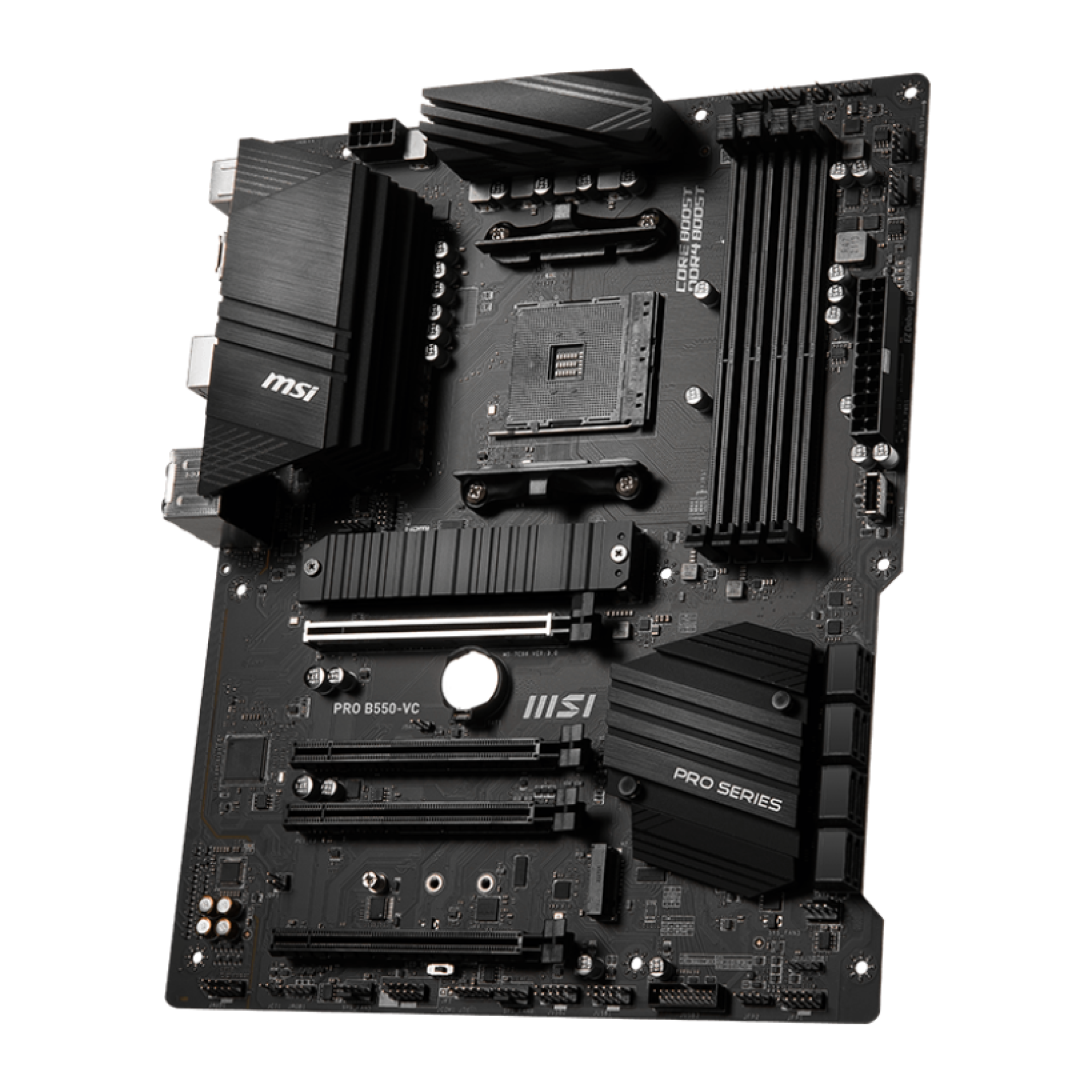
MSI PRO B550-VC ProSeries
A balance between low pricing and future proofing
MSI's B550-VC PRO ProSeries is an AM4 motherboard with support for PCIe 4.0 SSDs and GPUs, and has a midrange 10+2+1 stage VRM.
- Midrange 10+2+1 phase VRM
- Supports PCIe 4.0 SSDs and GPUs
- Provides an affordable foundation for future upgrades
- May struggle to run higher-end Ryzen CPUs
For a budget PC, you could just buy the cheapest motherboard available and call it a day, but that's not a great idea if you ever see yourself upgrading in the future. The cheapest motherboards have tiny VRMs, limited if any support for PCIe 4.0, and very few slots for SSDs, RAM, and other devices. That's why we recommend spending $140 on MSI's B550-VC PRO ProSeries, a motherboard that will support basically any upgrade you could conceivably make, saving you lots of money in the long run.
What we mainly care about here is the VRM, which is a 10+2+1 stage design. Weaker and smaller VRMs can't run higher-end CPUs at full bore, but a 10+2+1 stage VRM is enough even for a Ryzen 9 5950X to achieve at least close to its maximum performance (for gaming, you'd probably want a Ryzen 7 5800X3D instead though). Additionally, the B550-VC has PCIe 4.0 support for GPUs and SSDs whenever you upgrade to a PCIe 4.0 capable CPU.
The rear I/O is very limited, however. There are just eight USB ports, only four of which are USB 3.2. Additionally, the LAN port is only for gigabit Ethernet and uses Realtek instead of Intel. At least there are the full six audio ports and a BIOS flash button, but that's not enough to make the I/O anything but mediocre overall.
If you're focused primarily on performance and upgradeability, MSI's B550-VC PRO will do the job. Its VRM is just enough for the Ryzen 9 CPUs if you want one, it's got PCIe 4.0 on one M.2 slot and the x16 slot for GPUs, and it has an extra M.2 slot for PCIe 3.0 NVMe drives. It's a good compromise between the requirements of the budget and what you'll want in the future.
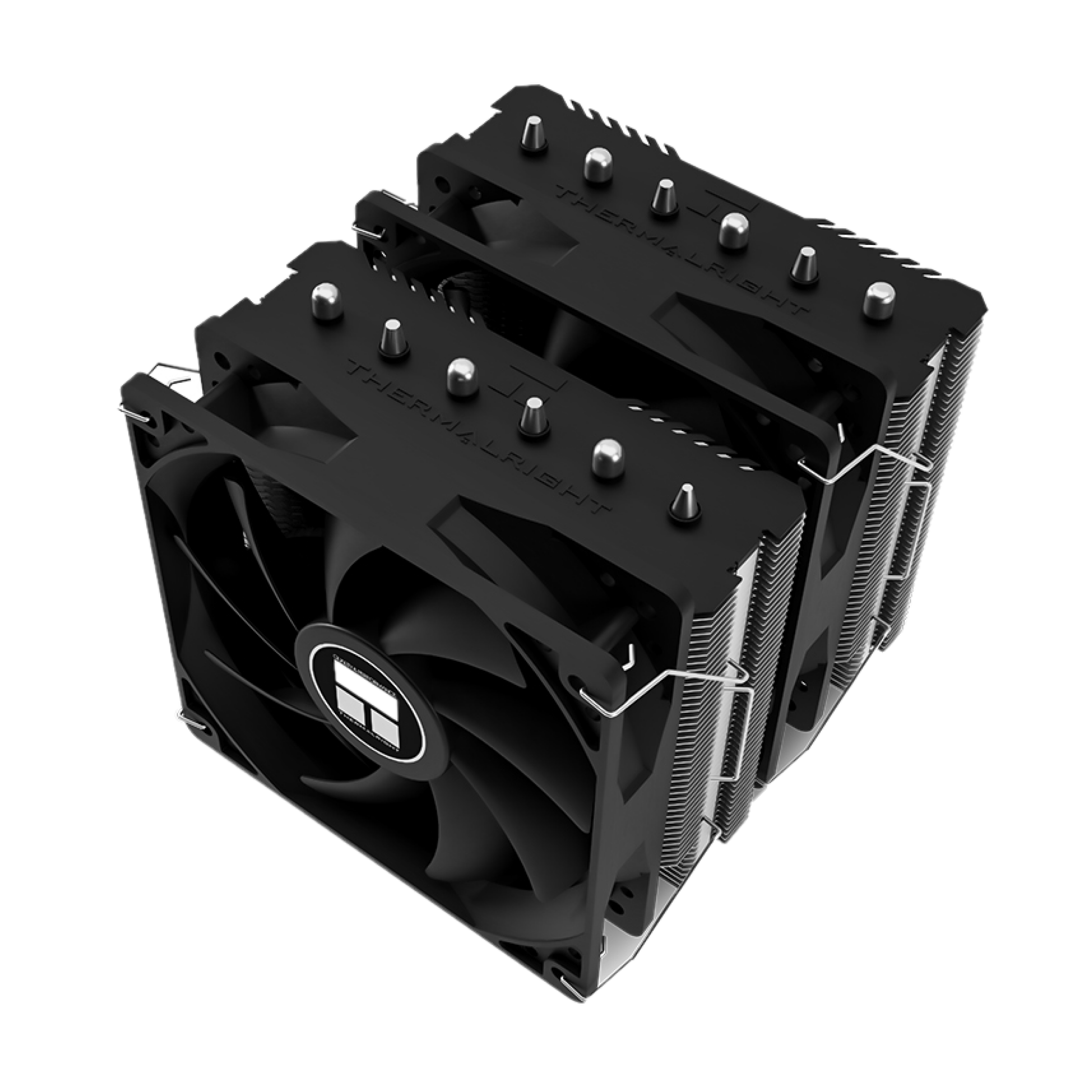
Thermalright Peerless Assassin 120 SE CPU Cooler
The best and greatest for super cheap
Thermalright's Peerless Assassin 120 SE is a value-oriented CPU cooler that costs around $40 and offers six heatpipes and two 120mm fans.
- Top-end performance for an air cooler
- Super cheap
- Two included 120mm fans
- Fairly big
You'd probably think that high-end components are completely out of the question on a $700 budget. Well, that's true, except when it comes to the CPU cooler. You can get Thermalright's Peerless Assassin 120 SE for less than $40, and it's tied with top-end air coolers like Noctua's NH-D15. It's not clear how Thermalright can afford to offer such a great cooler for so little, but either way, it's definitely going in this build.
To be clear, the 5600 is not a chip that requires sophisticated cooling. In fact, it comes with AMD's Wraith Stealth cooler, but the Peerless Assassin means the 5600 will definitely have enough thermal headroom to hit maximum performance, not to mention your PC will be super silent even under heavy CPU load. When you upgrade down the line, you won't need to swap out your cooler, since the Peerless Assassin can handle the 5950X just fine.
However, if you did want to save around $40 on this build, skipping the Peerless Assassin is certainly an option. That's $40 you could spend on perhaps a faster GPU, upgrading from the RX 6600 to the RX 6650XT or RX 7600. However, I think quiet fans make the PC gaming experience much more comfortable and less annoying, so it's worth it.
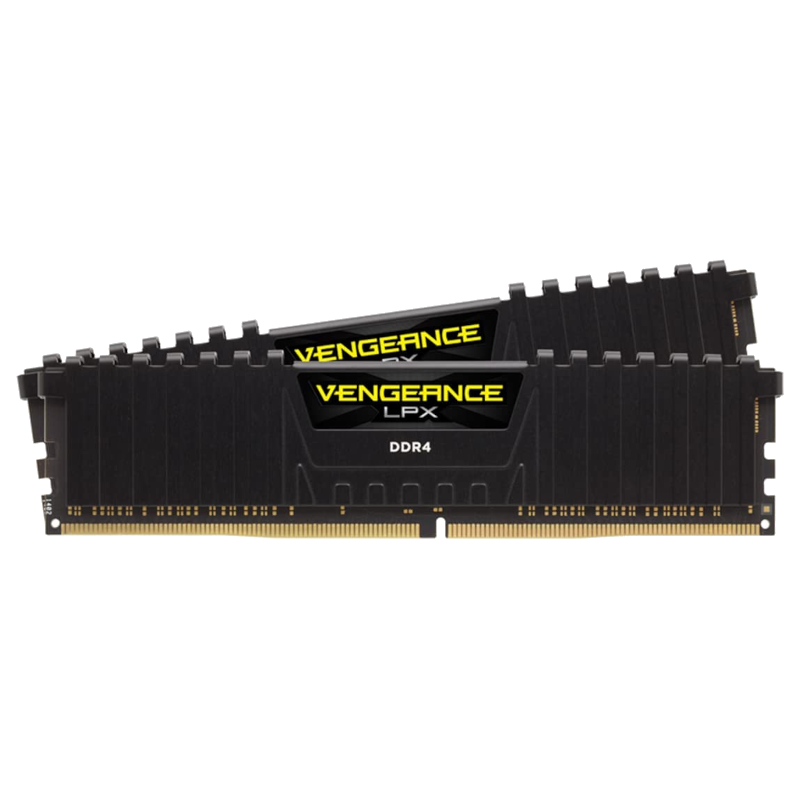
Corsair Vengeance LPX DDR4 RAM
High-end performance for just $40
Corsair's Vengeance LPX DDR4 memory is affordable, reliable, has one of the lowest profile designs around, and XMP has a one-click setup. There are two different versions: one optimized for AMD and another optimized for Intel.
- One of the cheapest DDR4 kits you can buy
- Low latency and sweet spot frequency
- Low profile
- Design doesn't look very good
It's almost not even a question what RAM kit you should get for this PC. Corsair's Vengeance LPX RAM is so cheap and so fast that there's quite literally no other option that makes sense unless you have several hundred dollars more to spend. It's one of the best kits of DDR4 memory you can buy, at only $40 to $50 for a 16GB kit.
Besides the price, the thing we like the most about Vengeance LPX are the specs. It's rated at 3,200MHz and has a CAS latency (or CL) of 16, which is very low. Much more expensive kits of RAM only get to CL15 or CL14, sometimes with lower frequencies since improving clock speed often comes at the cost of latency (also true for the other way around). Even the fastest DDR4 kits rated at 4,800MHz won't provide a significant performance boost unless you have a high-end CPU and play games at high framerates.
Whether you're building on a budget or something high-end, Corsair's Vengeance LPX is a very good option for memory. The only thing we don't really like about it is that its design is kind of boring, or even a bit ugly. Not that this matters for a budget PC, but if you ever get a larger budget down the line, you may be tempted to replace it just for looks alone. It's good that it's low profile at least.
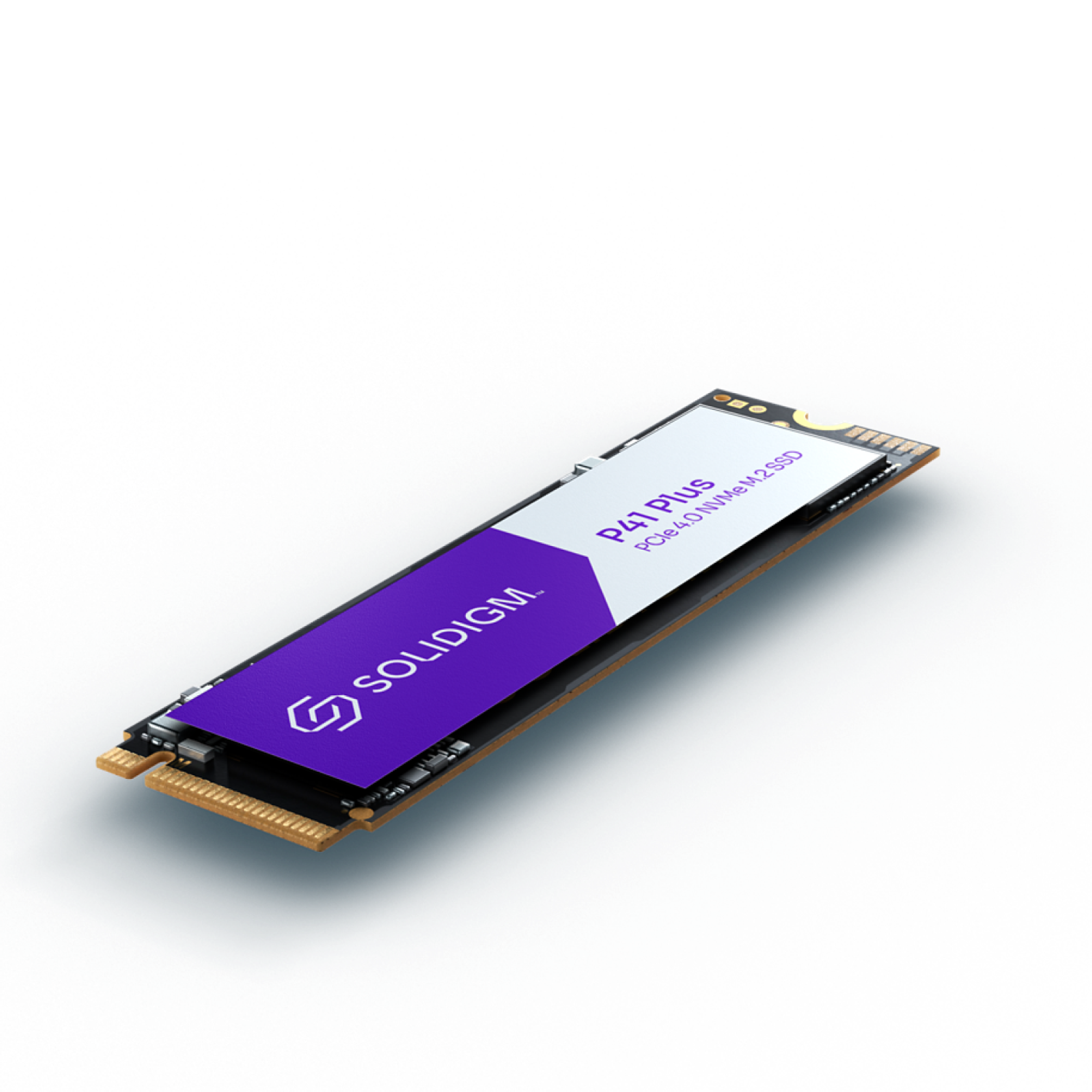
Solidigm P41 Plus
Good enough performance and plenty of space
Solidigm's P41 Plus is a budget PCIe 4.0 NVMe SSD that targets good bang for buck in respect to performance and capacity.
- 1TB model is just $45
- Fast enough
- Custom Solidigm software and drivers
- Supply is constrained
We're sort of in a golden age for cheap SSDs, where even $50 can get you a good 1TB drive. Though prices have started going back up recently, we can probably expect Solidigm's P41 Plus to be at most $50 for the 1TB drive. This SSD definitely isn't one of the fastest you can get, but it's cheap and its performance is still good, especially in areas that are key for good gaming performance.
In my review of the P41 Plus, I found that although sequential performance (usually indicative of large file transfer speeds) was barely faster than high-end PCIe 3.0 drives, its random performance was really good. Power consumption testing from other reviewers also indicates this drive is super efficient, which means it doesn't require a heatsink for cooling. Solidigm also offers its custom Synergy software which offers diagnostic info and special drivers for the P41 Plus, which help performance a little.
The P41 Plus 1TB currently goes for just about $50, while the 2TB model is only a little more expensive at $80. While spending $50 for the 1TB model will keep you within budget, spending an extra $30 towards the 2TB model is double the storage without doubling the price. If you have lots of big games that you plan on playing, you should try and scrape together enough money for the 2TB model.
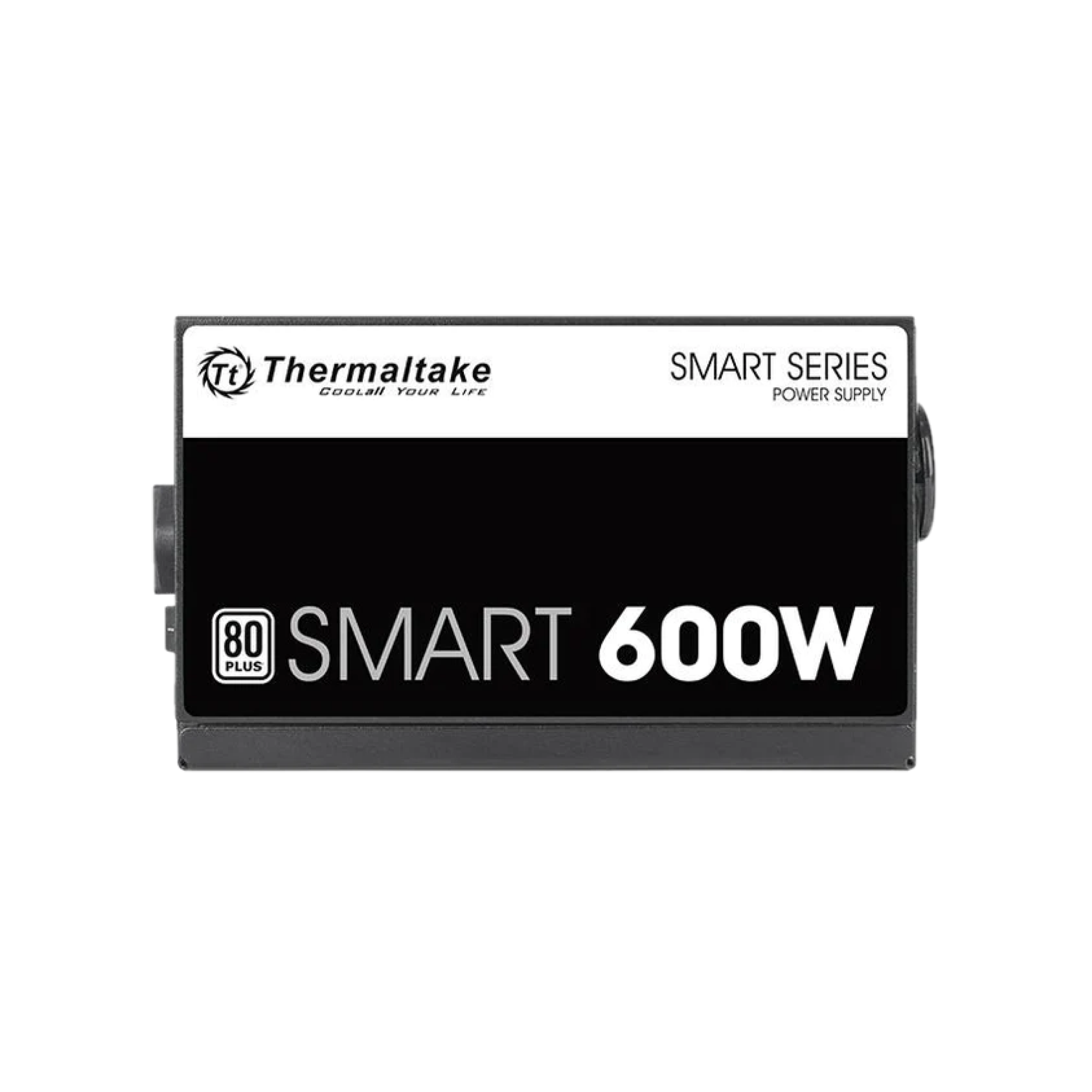
Thermaltake SMART 600W
600W for a low price
Thermaltake's SMART 600W power supply is cheap enough for budget PCs while offering plenty of power, enough to support even a GPU that requires two 8-pin power plugs.
- 600W offers lots of room for upgrades
- Trusted brand
- Only a little more expensive than lower wattage PSUs
- Not modular
On a tight budget, it might be tempting to save money on the PSU. After all, this build would probably work fine on a low-end 400W power supply, and there are tons of cheap brands out there on websites like Amazon that can provide that. But that would be a mistake: buying a high-quality PSU with enough watts for future upgrades is critical for PC building. That's why I recommend Thermaltake's Smart 600W PSU, which offers 600W of power at a low price, all while being a high-quality product from a trustworthy brand.
While the total power budget for the Ryzen 5 5600 and RX 6600 (which will consume the vast majority of power in this PC) is roughly 200W, for future upgrades, more power will be required. Even the more midrange RX 7700 XT needs 245W alone, so something like 600W is good to aim for. But just as important is the quality of the PSU, and the Smart 600W offers three of the six types of protection that PSUs tend to offer, which is pretty good considering it's only around $45. It also comes with a five-year warranty in case something goes wrong.
In the wider market, the Smart 600W is hardly any more expensive than lower-wattage PSUs while being much cheaper than other PSUs that only offer about an extra 100 or 200 watts. It's the perfect PSU on a budget, and there's really no competition from brands like Corsair, EVGA, or Seasonic in this area.
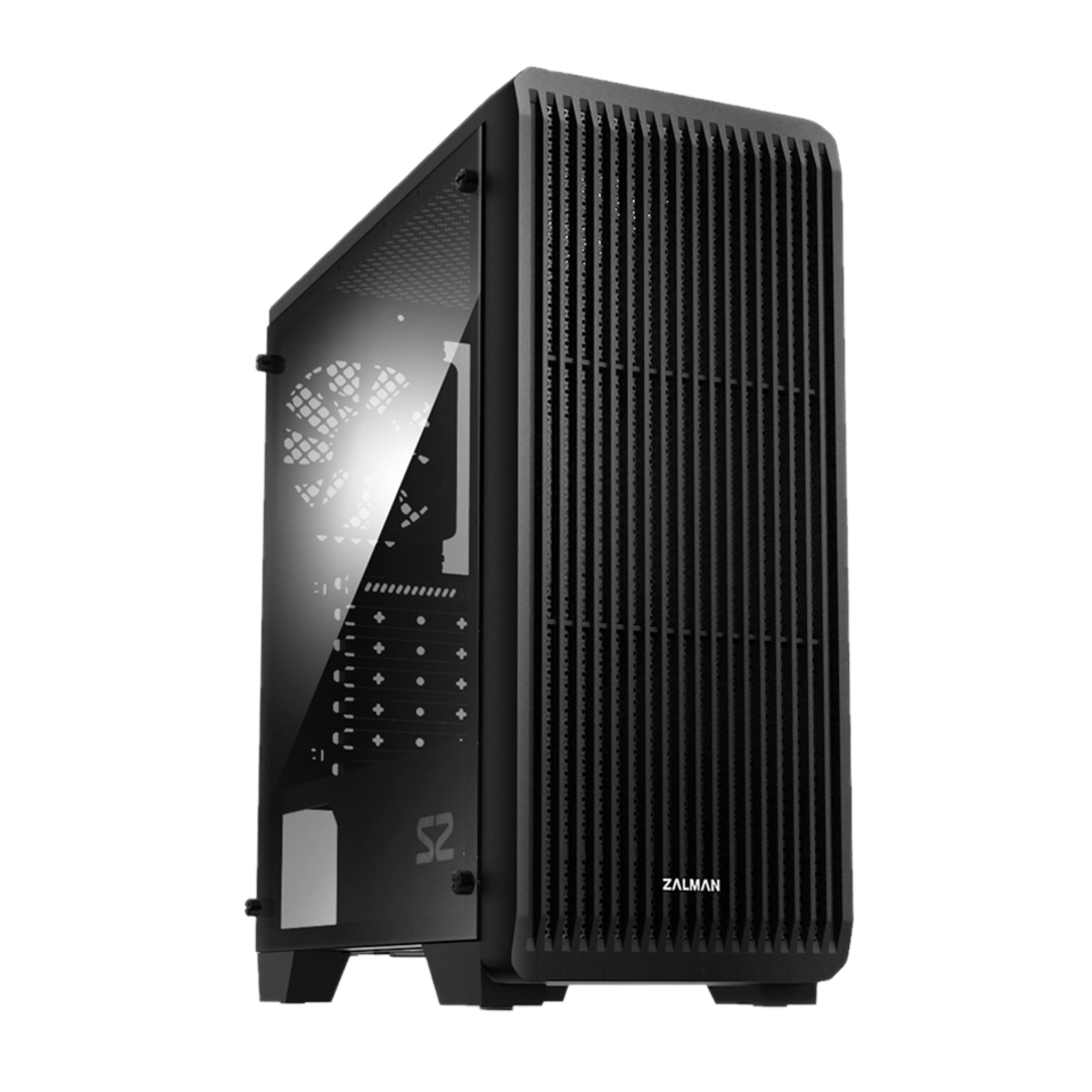
Zalman S2
A great value and good for cooling
The Zalman S2 is an affordable mid-tower PC case, but don't let that fool you into thinking it's not worth your time. This sleek-looking chassis has plenty of premium features usually found in more expensive cases.
- Three included fans
- Good front intake airflow
- Tempered glass side panel
- Fan speed can't be adjusted on included fans
Usually, it's not super important to get a particular case for any build since there are plenty of options out there that can accommodate a wide variety of components, but when you're on a budget it's different. We can only afford to spend about $70 on a case for this build, and one of the best options at this price point is the Zalman S2 chassis, which has exceptional bang for the buck.
The main reason we're recommending the S2 is the fact that it comes with three 120mm fans, which is going to be a big help in cooling down the CPU and GPU. Good intake airflow at the front makes those fans worth having, too. The fact that it also comes with a tempered glass side panel is also nice, though it doesn't impact performance.
However, there are some problems with the S2. Those three 120mm fans don't use 4-pin connectors, meaning no fan speed control whatsoever, which will undoubtedly be annoying for some. Additionally, the official product page says only 120mm radiators are supported, which basically makes an AIO not worth using at all (though with the Peerless Assassin that's not a concern anyway). At least the 156mm clearance for CPU coolers means top-end air coolers will fit just fine.
Overall, the Zalman S2 is a good deal but does have flaws. You could spend a little more for some really good cases, assuming you can afford it. If you're not bothered by the S2's downsides though, you'll be enjoying a pretty good value for performance and build quality.
Budget AMD PC build guide: Price breakdown
Here's how everything comes together and how much you'll likely pay for this particular set of components. Obviously, these are just the prices at the time of writing and it's almost certain that the price of these components will go up and down over time. However, it's highly likely in the long term that DDR4 RAM and SSDs are going to get more expensive, and at some point the older Ryzen 5 5600, RX 6600, and MSI Pro B550-VC are also going to increase in price as stock dries up.
|
Component |
Listed Price |
|---|---|
|
AMD Ryzen 5 5600 processor |
$133 |
|
AMD RX 6600 GPU |
$220 |
|
MSI PRO B550-VC ProSeries motherboard |
$140 |
|
Thermalright Peerless Assassin 120 SE CPU cooler |
$35 |
|
Corsair Vengeance LPX 16GB DDR5 RAM |
$45 |
|
Solidigm P41 Plus 1TB SSD |
$45 |
|
Thermaltake Smart 600W PSU |
$45 |
|
Zalman S2 mid-tower case |
$58 |
|
Total |
$721 |
For a budget gaming PC like this, it's important to try and buy the fastest GPU possible and cut back on other components as much as you can without compromising too much. You may notice that this build uses the same RX 6600 our $1,000 mainstream AMD PC build guide uses but saves about $250 by opting for the AM4 platform, which offers cheaper CPUs, motherboards, and RAM. You won't always be able to hit framerates higher than 120 FPS on this build, but if you prefer playing in the 60 to 90 FPS region, you're getting about the same gaming experience for less.
Of course, a PC is nothing without peripherals, and we didn't discuss those in this article. We have separate guides for headsets, mice, keyboards, and more. You should also join the XDA Computing forums if you want to discuss making a PC based on this build guide; our community members can offer additional recommendations and advice.
